The HTC 10 Review
by Joshua Ho on September 19, 2016 8:00 AM ESTSystem Performance
One of the major areas worth discussing when it comes to mobile devices is computing performance. As much as OEMs try to not talk about this, ultimately what distinguishes a smartphone from a featurephone or simple flip phone is dramatically improved compute. Running a web browser, running a full Linux OS with apps that require JIT or AOT compilation are all tasks that demand large amounts of system memory and compute. Similarly, any kind of 3D game is going to require quite a bit of compute power and memory in general. As mentioned in previous reviews a major focus for this year has been trying to make our benchmarks more focused on real-world performance, so we’ll be better able to show how the HTC 10 actually performs relative to other devices on the market.
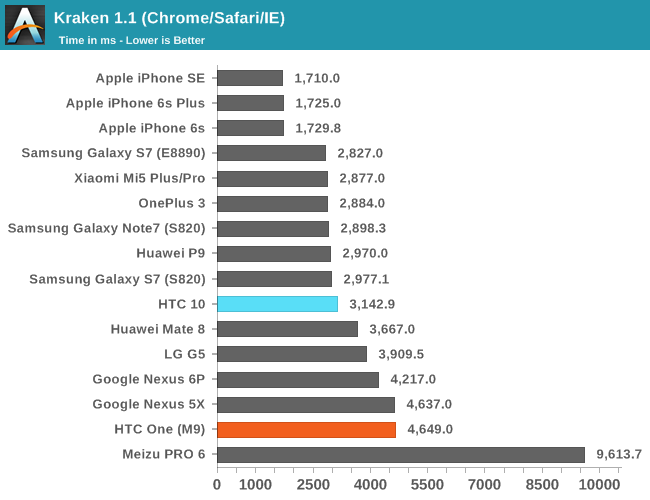
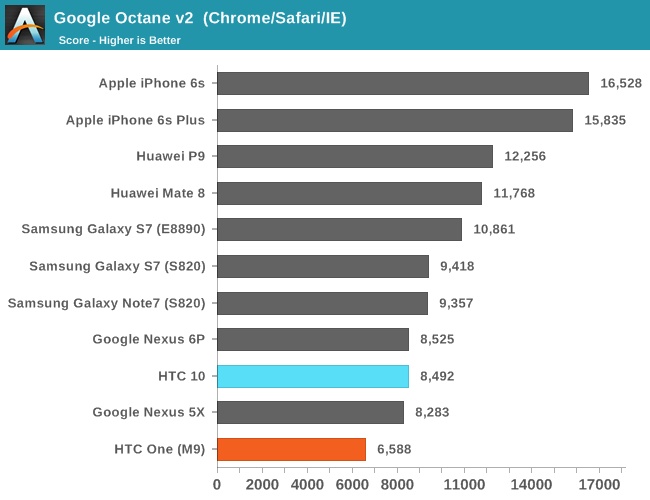
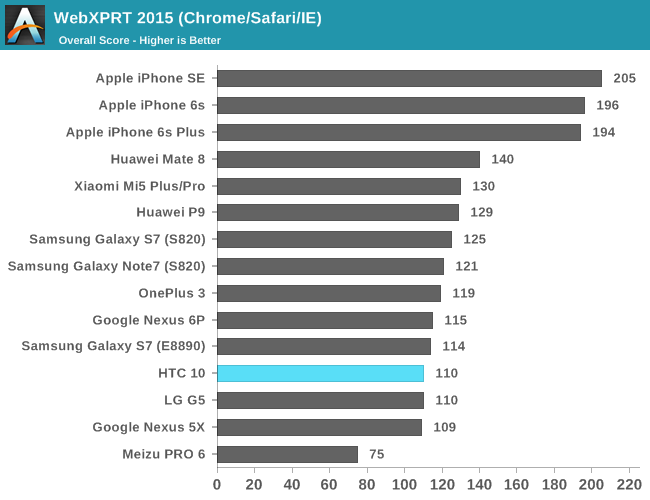
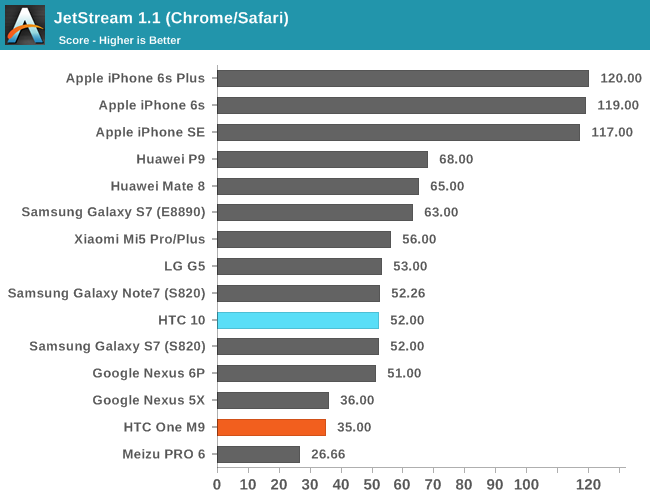
In the basic browser benchmarks, we can see that the HTC 10 is pretty much on par with all other Snapdragon 820 devices. This shouldn't really come as a surprise given how much of an optimization target all of these benchmarks are for the OEMs and SoC vendors, but performance in general on Snapdragon 820 is not necessarily great for web browsing with Chrome.
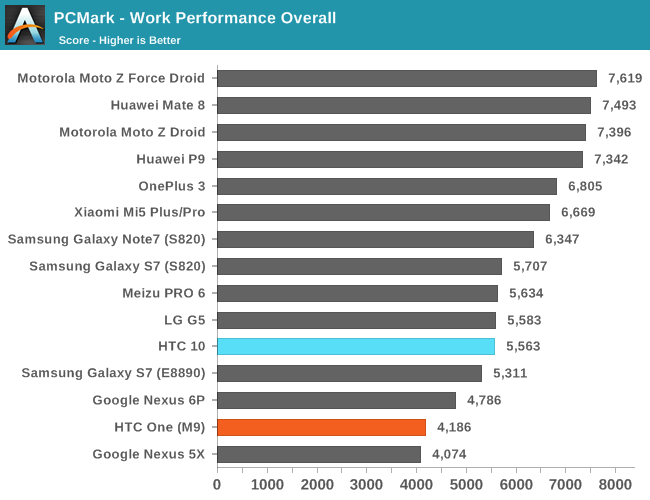
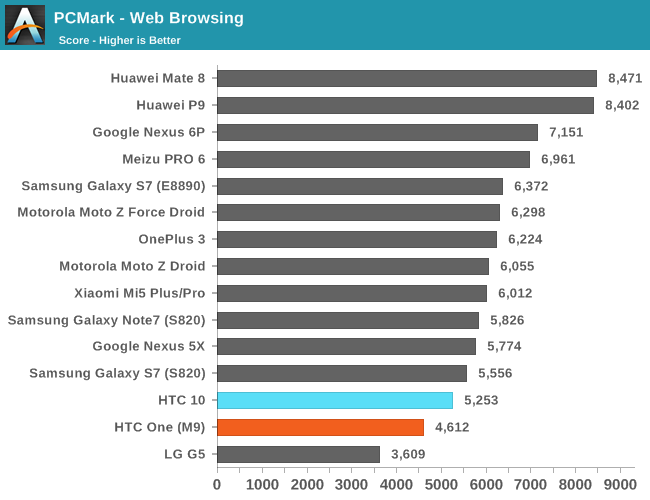
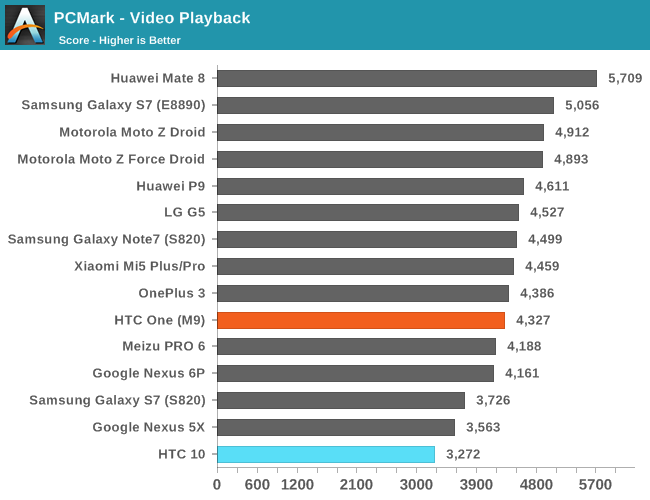
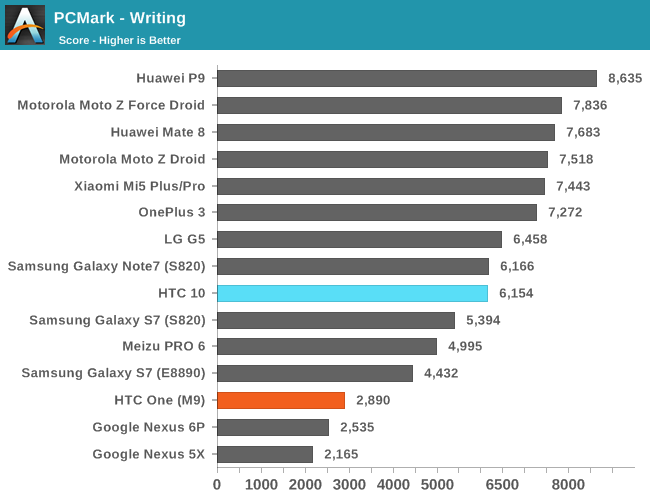
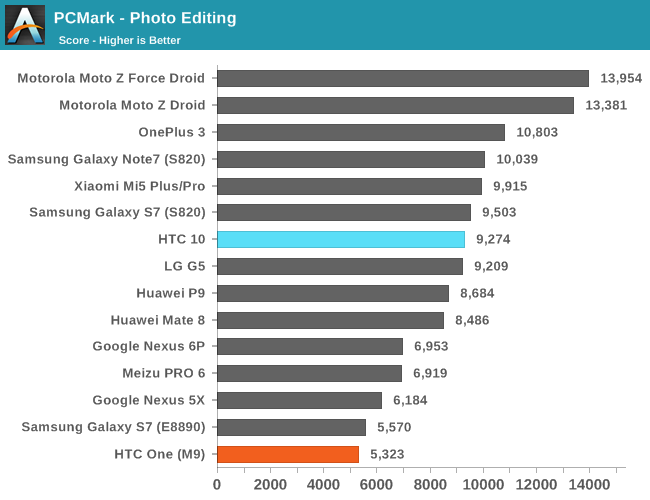
PCMark is very sensitive to DVFS changes in most cases so it's interesting to see how closely it performed to the Galaxy S7 and G5. What is notable here is the poor showing in video playback, which persists even if you use HTC's CPU cheats which are still accessible from the developer settings. The average scores that PCMark records is significantly higher than what I can achieve with the HTC 10 unless I enable high CPU performance mode. Determining what this means has been left as an exercise to the reader.
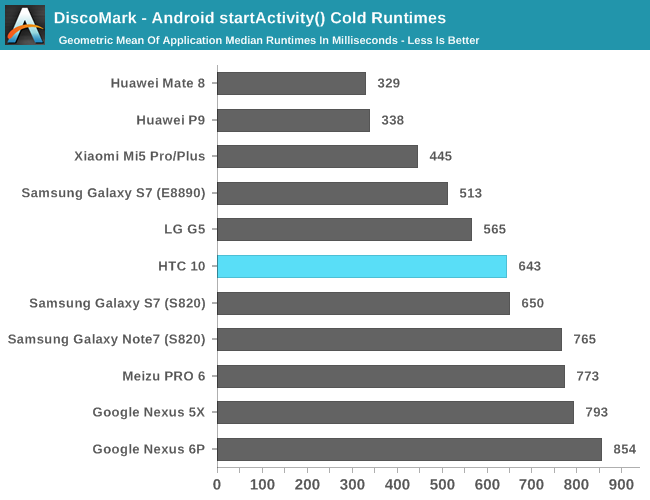
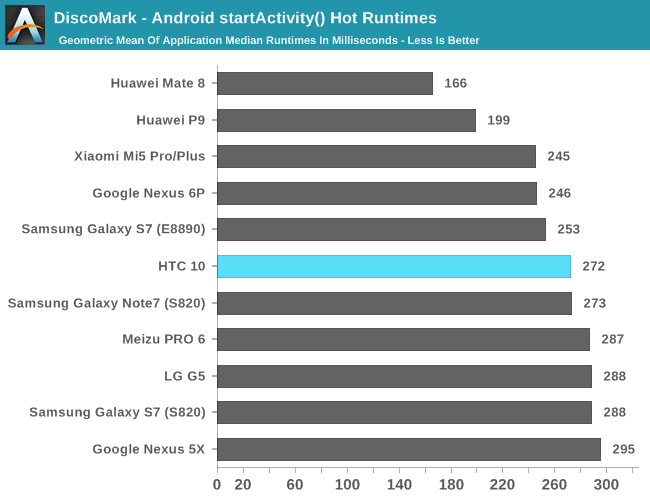
Looking at the HTC 10 overall results it might be tempting to simply suggest that overall performance is comparable to the Galaxy S7 with S820 but when you look at the individual breakdown the main reason why the HTC 10 seems to be so slow is because the location provider in Maps is causing its launch time to be significantly higher than most phones I've seen before. In just about every other situation the Galaxy S7 is significantly behind the HTC 10. Overall, I think the HTC 10 performance is in line with what I'd expect for a Snapdragon 820 phone here.










183 Comments
View All Comments
zeeBomb - Monday, September 19, 2016 - link
The days when the M7 got that gold plaque from Anandtech...will we be seeing that type of success here for HTC again?Zoomer - Monday, September 19, 2016 - link
Good point. What about the silver and bronze plaques?Meteor2 - Monday, September 19, 2016 - link
Josh, you ask what makes a good display -- I'd say brightness of at least 400 nits (500 to be great), at least sRGB coverage, accurate white and low delta E -- I.e., accuracy. The one thing you don't test which makes a big difference is reflectance. That's the critical factor when using a screen in sunlight.fanofanand - Monday, September 19, 2016 - link
This seems like an excellent phone, for $400. The days of $700 flagships are nearly over. When the difference between the high-end and mid-range are a few percent, I do not see why consumers should pay nearly double.Death666Angel - Monday, September 19, 2016 - link
As long as a lot of people get their phones through contracts that hide the true cost over a 2 year monthly payment, it won't.fanofanand - Tuesday, September 20, 2016 - link
Those days seem to be coming to an end as well. T-Mobile has been incredibly disruptive in the mobile carrier space. I hope the trend continues which theoretically should bring phone prices down to earth. I know they house a ton of technology in a tiny package, but it's a little bit crazy that a phone costs more than a semi-decent laptop which has dramatically more functionality. Of course there is the portability aspect I'm not delusional, smaller everything costs more to package but there is little sense of value in today's flagships.Impulses - Thursday, September 22, 2016 - link
People in the U.S. still rely on payment plans a lot, which goes a long way towards hiding the total cost and keeping them buying phones from carriers.Vagabondjonez - Monday, September 19, 2016 - link
Oh man am I dreaming?Aenean144 - Monday, September 19, 2016 - link
Really liked the measurement of WiFi performance. Nice Job!It probably doesn't matter much, as most consumers would be gated by their broadband bit rates which are typically much less than 100 mbit/s, but it was lovely to see. Those high bit rates are really nice for video transfers from the computer though.
I would recommend using fixed x and y axis ranges for the plots. If the point of the plots are for comparison, and basically that's the purpose of a plots, you should either co-plot the data from the devices are minimally have fixed axis ranges.
I wonder if the differences are really about design decisions. So, Apple optimized for high bandwidth, and it resulted in a quicker fall off at lower signal levels? And vice versa for the HTC 10 and Samsung device?
JeffFlanagan - Monday, September 19, 2016 - link
I used to be an HTC fan long ago, but the quality of their phones had been in decline for a long time. Add to that my experience with their non-existent customer support on the Vive, and they've become a company that I avoid wherever possible.